In the Unheimliche/s Gestalten (Uncanny figures) workshop, we will be inspired by the diversity of textiles and create a three-dimensional relief in an intuitive way. We will deal with different textiles by folding, crumpling and knotting them and surrendering to chance. It is a creative journey in which we explore the boundaries between control and spontaneity and let our instincts guide us.
In the next step, we delve deeper into the world of fantasy and uncanny figures. We investigate exactly what hidden creatures could be hiding in the folds, knots and tangles of the relief. We go in search of the secrets hidden in the surface structures of the textiles.
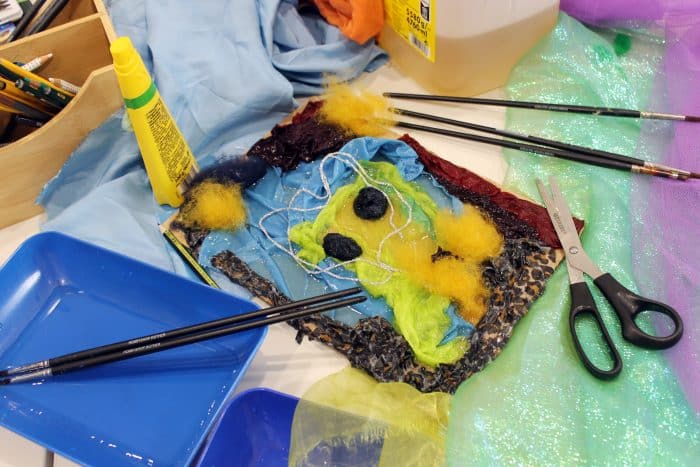
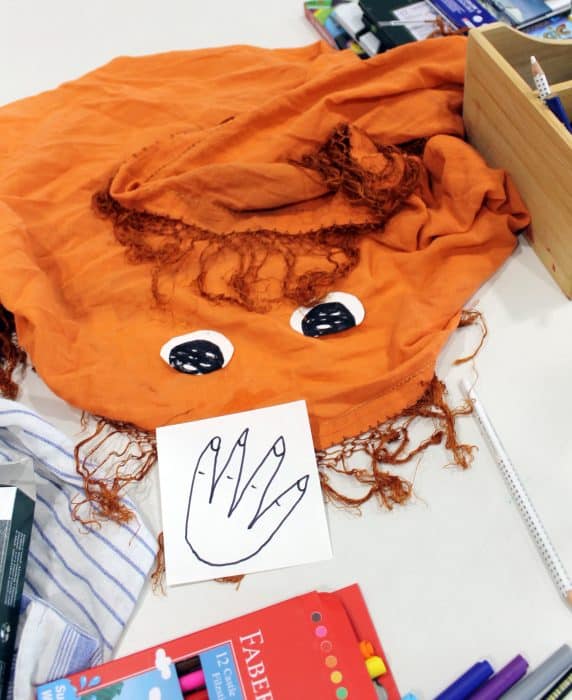
Through this creative process, we begin to discover uncanny shapes and figures that are just waiting to be brought to light. Using colours, paper and other materials, we emphasise these hidden creatures.
The result is a three-dimensional image that tells stories ranging from funny to scary monsters and their fascinating stories. These are works that not only appeal to our senses, but also stimulate our imagination.
In the current exhibition Durchdringen: Das U/unheimliche s/Sehen (Inter/Penetration: The Uncanniness of Seeing), the works by artist and curator Michael Müller and other artists explore pairs of opposites such as abstract/figurative, conscious/unconscious and visible/invisible. Together we will be inspired by the diverse aesthetic and artistic practices, strategies and methods expressed in the exhibited works. We will examine how the artists of the 20th and 21st century play with different materials, colours and forms. In doing so, we reflect on how art as an individual means of expression contributes to bringing the unconscious into the individual consciousness and open up new perspectives for us.
“As one dreams, so one should paint” (Werner Heldt)
Dream, longing, home Berlin and freedom are the themes of the exhibition by artists Werner Heldt and Burkhard Held at the Stiftung Kunstforum Berliner Volksbank.
In the workshop, we would like to concentrate on our own view and ask ourselves how our surroundings can change in the future.
With pen and paper, we will visit the exhibition 100 Years of Held(t)en: Werner Heldt and Burkhard Held and explore the composition of the pictorial worlds, the staging and their stylistic forms of expression. How are pictures constructed? How are people and their surroundings depicted?
We make a spontaneous, spatial sketch on site and let the works of art inspire us. The way there and the street in front of the Kunstforum can also be included.
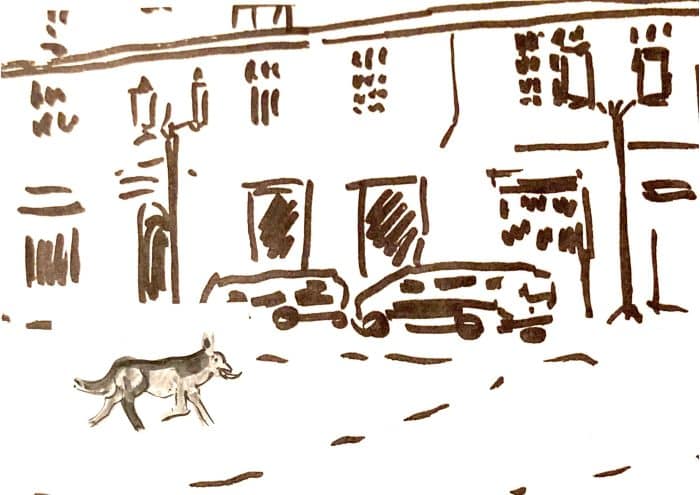
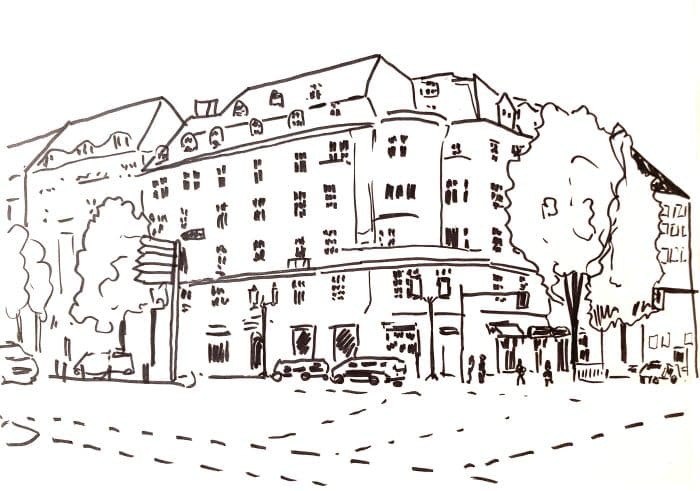
In the workshop, we take this first draft as a starting point and continue to draw our imaginary space from it in our heads. Future architecture, our own spaces, Berlin and excerpts from the neighborhood are our graphic introduction to the topic.
The near and the far are connected. A window, a view from the inside to the outside, can transport us to another world or reveal layers of history. Starting from this site-specific sketch, we develop our own spatial image. Pencils, markers, wax crayons and other graphic tools are our basis.
This creates a connection between dream and reality, from which an abstract, invented and utopian space can be assembled.
The somewhat different class photo
For many decades, staged photography has not only been a tool in art, but an everyday component of children’s and young people’s lives. Especially selfies – alone or as a group – accompany us in everyday life.
In the workshop, we would like to throw our own spotlight on the exchange between painting, graphic art, sculpture, theatre and photography and build a bridge to selfie culture.
First we will visit the exhibition SchlagLicht at the Stiftung Kunstforum Berliner Volksbank and explore the composition of pictorial worlds and the staging of people. How are pictures constructed? How are people portrayed? How do artists portray themselves? How do they deal with their identity? How is alienation done and what effect does it have?
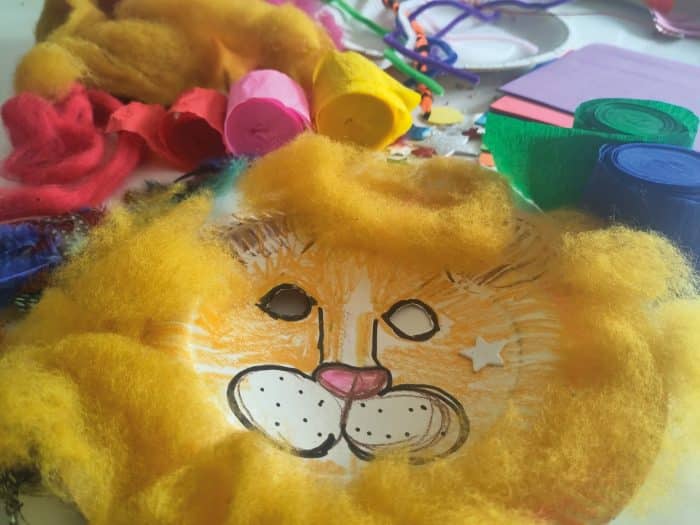

In the creative part, the aim is to create an “artistic” class photo by alienating the self and staging it. The participants work haptically on their “alienation” and make masks on a certain theme out of paper plates, coloured paper, fabric scraps and other materials. For the younger groups, this will be circus or carnival of the animals. Older children will work on the Night Café by Hubertus Giebe. What would your class look like if you were all members of a circus, took part in the Carnival of the Animals or were visitors to the Night Café in Hubertus Giebe’s painting?
The group then recreates one of these scenes with the masks they have made and this is captured photographically in front of an improvised stage. Each group receives its own data carrier on which the “somewhat different class photo” can be taken away.
Joy, happiness, anger and sadness are just some of the emotions we feel every day. We also feel something when we look at art.
We explore these emotions and put them on paper!
With ink and Asian ink brushes, this is achieved in spontaneous movement Momentary captured. Be it joy, contentment, pride, sadness or anger. We give free rein to our feelings.
To do this, we experiment with different shades of black, gradually taking the primary colors yellow, blue and red. The picture is ultimately an expression of ourselves.
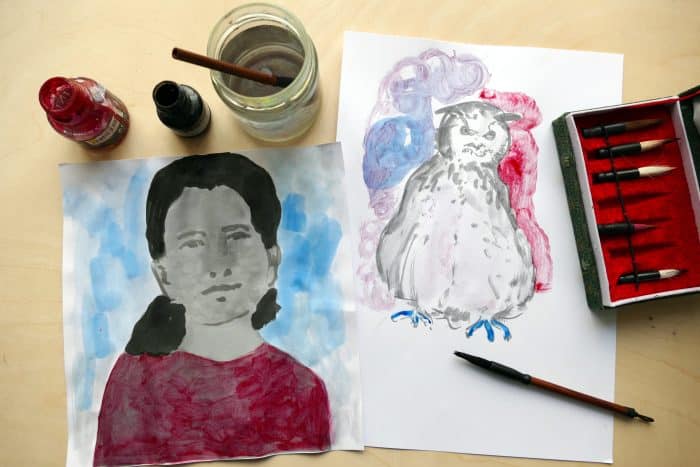
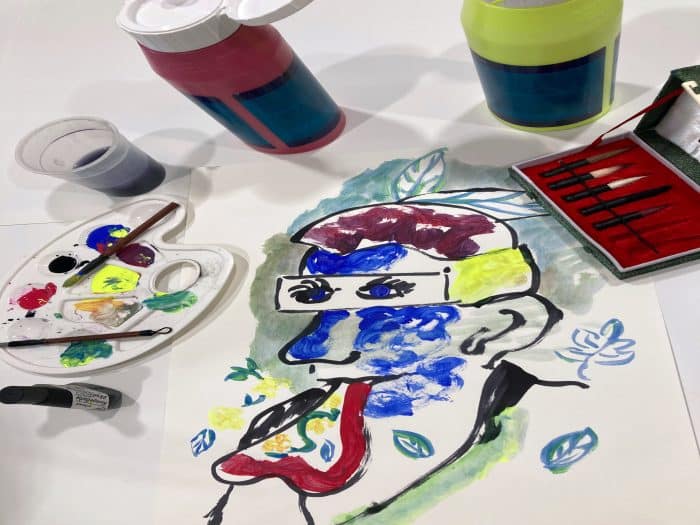
The Workshops of the Werkstatt für Kreative are an educational activity for school classes and groups of children or teens between the ages of 5-18, with a minimum of 10 and a maximum of 28 participants. Duration of approximately 2 hours. Per institution, 2 Workshops are available for free per school term. Further workshops can be booked for a fee. Would you like to stay up to date ? You want to be informed on time about the start of the workshops or a new exhibition?
Then please take a look at our website and subscribe to our newsletter for the Werkstatt für Kreative or the general newsletter for information regarding the exhibitions, events etc.
We dare to do something and suddenly everything is possible. A moment of uncertainty and freedom at the same time, in which nobody knows what will happen next. We want to trace such moments in the workshop REMIX Die große Freiheit in der Kunst (REMIX The Great Freedom in Art). The occasion is the exhibition Aufbrüche. Abbrüche. Umbrüche. Kunst in Ost-Berlin 1985–1995 in the Stiftung Kunstforum Berliner Volksbank. It shows art from the years of reunification by East German artists and how they experienced the time of upheaval. A time that brought confusion and helplessness, but also suddenly offered great freedom and opened up completely new possibilities. After visiting the exhibition, we take all artistic liberties in the workshop. We cut, we glue, we draw, we paint and paint over whatever we can get our hands on. Using catalogues, posters, newspapers, magazines, cardboard, foam rubber and various colours, we combine old with new and foreign with our own, layer by layer. This is how completely free and personal mixed media works of art are created.
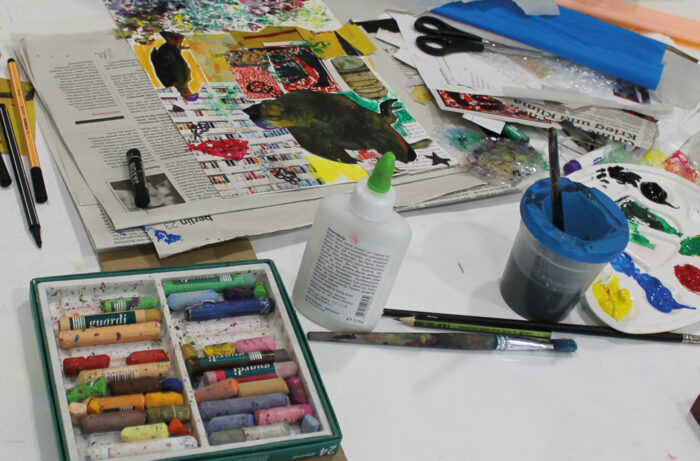
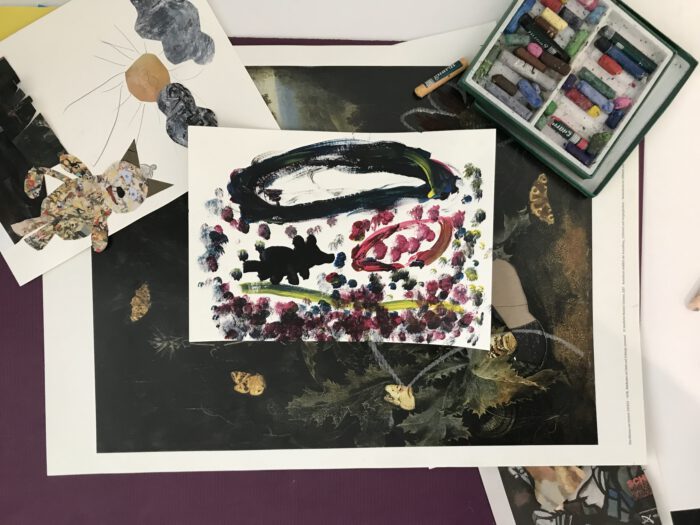
The Workshops of the Werkstatt für Kreative are an educational activity for school classes and groups of children or teens between the ages of 5-18, with a minimum of 10 and a maximum of 28 participants. Duration of approximately 2 hours. Per institution, 2 Workshops are available for free per school term. Further workshops can be booked for a fee. Would you like to stay up to date ? You want to be informed on time about the start of the workshops or a new exhibition?
Then please take a look at our website and subscribe to our newsletter for the Werkstatt für Kreative or the general newsletter for information regarding the exhibitions, events etc.
Blue, red, green, pink! Banknote’s can be colorful and their motives as diverse as the world. But, how would the notes look, if children and teens were to design them themselves ?
In the accompanying workshop of the exhibition CASH on the Wall in the Stiftung Kunstforum Berliner Volksbank we will do exactly that and produce our own artistic play money. During a tour together through the exhibition we will first learn about the different approaches of the artists, additionally we will talk about the topic of money in art. In the creative part of the workshop, in the Werkstatt, using material such as self-made stamps, printing blocks made from cellular rubber and everyday materials such as cork, corrugated cardboard and bubble pack we will create individual and colorful bills with your very own motives, names and values. Once they’re dried and cut, you can start an active trade with your own toy money. You can of course take your self-made stamps and toy money back home.
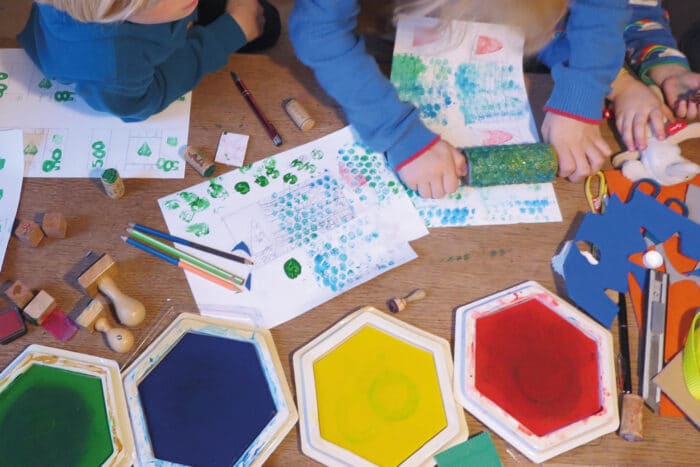
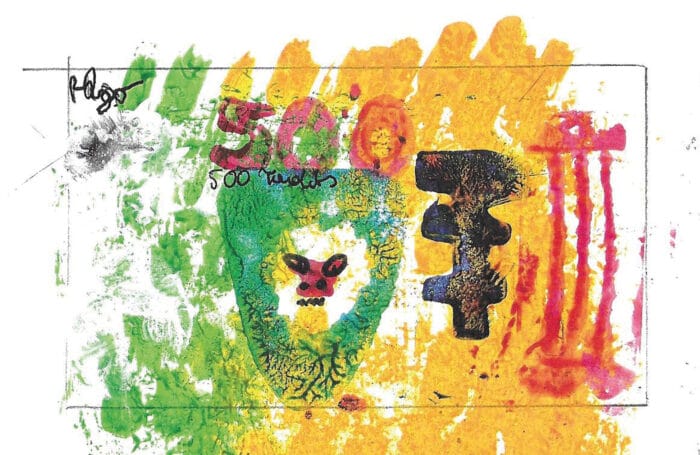
The Workshops of the Werkstatt für Kreative are an educational activity for school classes and groups of children or teens between the ages of 5-18, with a minimum of 10 and a maximum of 28 participants. Duration of approximately 2 hours. Per institution, 2 Workshops are available for free per school term. Further workshops can be booked for a fee. Would you like to stay up to date ? You want to be informed on time about the start of the workshops or a new exhibition?
Then please take a look at our website and subscribe to our newsletter for the Werkstatt für Kreative or the general newsletter for information regarding the exhibitions, events etc.
For the 75th anniversary of the Berliner Volksbank as well as 35 years of the Kunstsammlung, the Stiftung Kunstforum Berliner Volksbank and 15 years of the “Werkstatt für Kreative”, there is an extraordinary exhibition with favourite artworks of the collection, selected by 10 employees of the bank. It is called “WIR. Proximity and Distance – Anniversary Exhibition with Works from the Art Collection of Berliner Volksbank”.
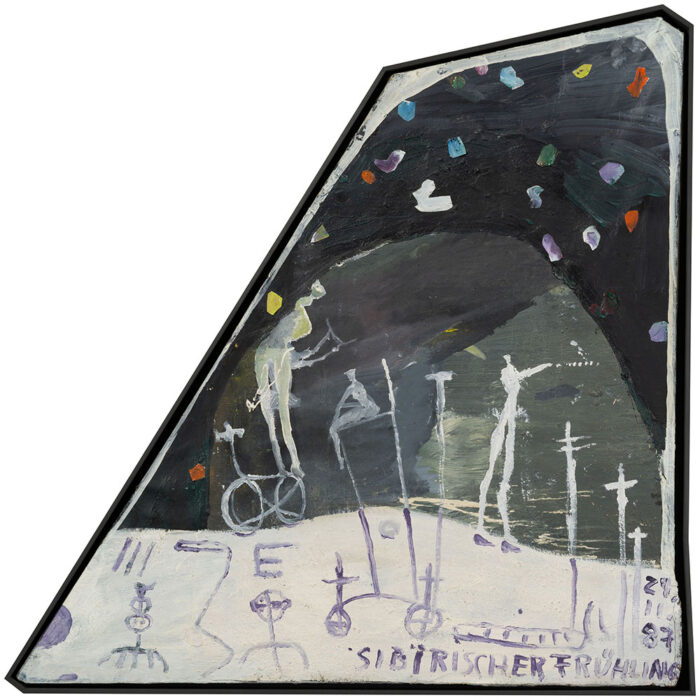
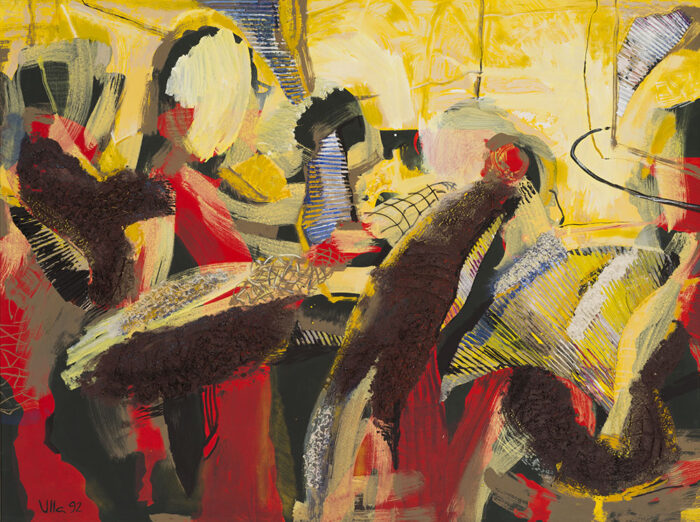
By walking through the exhibition accompanied by art educators, children and young people will learn about works by, among others, Hermann Albert, Rolf Biebl, Christa Dichgans, Klaus Fußmann, Sylvia Hagen, Angela Hampel, Werner Heldt, Thomas Hornemann, Ingeborg Hunzinger, Karl-Ludwig Lange, Wolfgang Leber, Markus Lüpertz, Wolfgang Mattheuer, Harald Metzkes, Silke Miche, Kurt Mühlenhaupt, Roland Nicolaus, Wolfgang Peuker, Erich Fritz Reuter, Cornelia Schleime, Ludwig Gabriel Schrieber, Ruth Tesmar, Christian Thoelke and Hans Uhlmann and gain initial inspiration for the subsequent workshop through the diversity of the works.
The principle of the exhibition is the particularity of a motif, which is singled out from the multitude of possibilities in a collection and examined more closely. The workshop is also dedicated to looking at a favourite object and recreating it.
Later, in the rooms of the Werkstatt für Kreative, specially selected works of art by René Graetz, Gerhard Altenbourg and Ludwig Gabriel Schrieber, among others, serve as further examples to inspire visitors to create their own works. The juxtaposition of two- and three-dimensional works leads, for example, to the question: How does a surface become a space? Afterwards, in the practical part of the workshop, the children and young people creatively put their acquired knowledge into practice under expert guidance. As always, the small works of art can be taken home.
– for children and young people between 5 and 18 years of age
– registration is required
– the offer is free of charge.
If the quota is exhausted, there is also the option of booking a workshop for a cost contribution.
For the exhibition “Die wilden 20er – Nach(t)leben einer Epoche. Werke aus der Kunstsammlung der Berliner Volksbank,” the Werkstatt für Kreative will teach the technique of glass painting in age-differentiated workshops from the end of August to mid-December 2020.
The 1920s are often referred to as “The Roaring Twenties”. Artists have captured this time with its shrill and oppressive sides in many different ways. They were particularly fascinated by Berlin’s nightlife. Among other things, they developed the style of “Neue Sachlichkeit” (New Objectivity). Thematically, it was also about everyday objects and exact reproductions, for example in still lifes or everyday scenes. In addition, the “Magic Realism” of the 1920s impressed many with sometimes surreal and mysteriously alienated paintings. Artists are still influenced by these styles today.
When visiting the exhibition in the Kunstforum der Berliner Volksbank, children and young people learn about the rich diversity of works in the style of “Neue Sachlichkeit” and “Magischer Realismus” and receive initial inspiration for the subsequent workshop.
After visiting the exhibition, specially selected works by Gudrun Brüne, Bertold Haag, Thomas Schindler and Christian Thoelke serve as further examples in the rooms of the “Werkstatt für Kreative,” in order to stimulate their own imagination and work. For the practical part of the workshop, the children and young people produce their own coloured compositions on acrylic glass under expert guidance. The small works of art unfold a special liveliness in the interplay of light and shadow and can be taken home.
If the quota is exhausted, there is also the option of booking a workshop for a cost contribution.
To accompany the exhibition “Tête-à-Tête. Köpfe aus der Kunstsammlung der Berliner Volksbank”, the Werkstatt für Kreative will teach the technique of portraits on handmade paper in age-differentiated workshops from January to the end of June 2020.
During a visit to the exhibition in the Kunstforum der Berliner Volksbank, children and young people will have the opportunity to recognise the rich diversity of two- and three-dimensional forms of representation of portraits by artists such as Luciano Castelli, Angela Hampel, Gerd Sonntag and Ulla Walter and will receive initial inspiration for the subsequent workshop.


In the practical part, the children and young people then create their own papers from cotton pulp in the rooms of the “Werkstatt für Kreative” under the expert guidance of art educators. The slightly irregular, lively structure of the resulting background and the contrasting colours of the pulp enable expressive, individual works.
If the quota is exhausted, it is possible to book an additional workshop for a fee.
For the exhibition “ZEITENWENDE – Dreißig Jahre Mauerfall. Werke aus der Kunstsammlung der Berliner Volksbank,” the Werkstatt für Kreative teaches the special technique of “sgraffito” in age-differentiated workshops.
The workshop “Mauer(n) ritzen – Sgraffito auf Ölpastell” is divided into two parts. First, in the theoretical part, during the joint visit to the exhibition in the art forum, participants are introduced, and their curiosity awakened, to techniques and motifs using two or three works from the Berliner Volksbank collection.
Under the professional guidance of art educators, the practical part in the rooms of the Werkstatt für Kreative encourages and stimulates the participants’ own creativity. Children and young people are guided by the oil pastel painting style of the Berlin-based artist Giuseppe Madonia. Imaginative motifs are scraped and scratched out of densely pigmented layers of paint.
If the quota is exhausted, it is possible to book an additional workshop for a small fee.